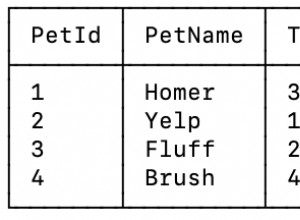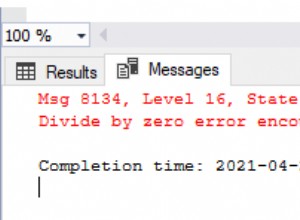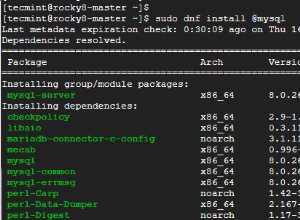इसे हल करने के कई तरीके हैं; सबसे सीधा तरीका शायद कुछ exists . का उपयोग करना होगा खंड, या attributes में शामिल हों तालिका दो बार, लेकिन आप group by . का भी उपयोग कर सकते हैं और having समान परिणाम प्राप्त करने के लिए खंड:
-- option 1: using multiple exists clauses
select p.id, p.productname
from Products p
where exists (select 1 from Attributes a where p.ID = a.ProductID and a.AttributeID = 3)
and exists (select 1 from Attributes a where p.ID = a.ProductID and a.AttributeID = 4);
-- option 2: using multiple joins
select p.id, p.productname
from Products p
join Attributes a3 on p.ID = a3.ProductID
join Attributes a4 on p.ID = a4.ProductID
where a3.AttributeID = 3
and a4.AttributeID = 4;
-- option 3: using aggregate and having
select p.id, p.productname
from Products p
join Attributes a on p.ID = a.ProductID
group by p.id, p.productname
having sum(case when a.AttributeID = 3 then 1 else 0 end) > 0
and sum(case when a.AttributeID = 4 then 1 else 0 end) > 0;
-- option 4: using having and count
select p.id, p.productname
from Products p
join Attributes a on p.ID = a.ProductID
where a.AttributeID in (3,4)
group by p.id, p.productname
having count(distinct a.attributeid) = 2;
आपके लिए कौन सा तरीका सबसे अच्छा है, यह शायद इस बात पर निर्भर करेगा कि आपको किस परिणाम की आवश्यकता है और अनुक्रमित वगैरह।




